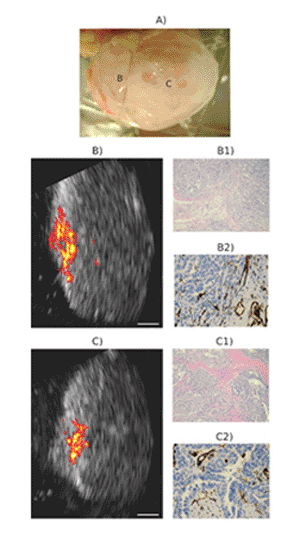Hybrid Imaging Technology Shows Potential in Identifying Hard-to-Detect Ovarian Cancer
By MedImaging International staff writers
Posted on 19 Sep 2011
By combining three previously distinct imaging modalities into one new device, a team of researchers has proposed a new way to diagnose early-stage ovarian cancer in high-risk women through minimally invasive surgery. The new technique may be better than the current standard procedure of preemptively removing the ovaries.Posted on 19 Sep 2011
Ovarian cancer has a low survival rate because a lack of effective screening techniques typically means the disease remains hidden until the later stages. Now researchers from the University of Connecticut (Storrs, USA) and the University of Southern California (USC; Los Angeles, USA) have drawn on the unique advantages of multiple imaging approaches to evaluate a new way of spotting early-on the tissue irregularities that are hallmarks of cancer.

Image: A malignant postmenopausal ovary (A). Coregistered ultrasound and photoacoustic images of two different locations are shown in B and C. (B1 and C1) H&E stains (A-40) of the corresponding areas showing extensive high-grade tumors. (B2 and C2) CD31 stains (A-100) of the corresponding areas showing extensive thin-walled microvessels. White bar, 5 mm (Photo courtesy of the University of Connecticut School of Engineering).
For their diagnostic device, the researchers combined the contrast provided by photoacoustic imaging, the high-resolution subsurface imaging provided by optical coherence tomography (OCT), and the deeper tissue imaging provided by pulse-echo ultrasound. They assessed their device, described by the team in the September 2011 issue of the Optical Society’s (OSA) open-access journal Biomedical Optics Express, by imaging both pig and human ovarian tissue, and accurately identified malignant tumors that were later validated by staining the tissue and examining it under a microscope. These early tests were performed on tissue that had been surgically removed, but the diameter of the device--at only 5 mm--is small enough that it could potentially be inserted through a small slit to image tissue in live patients.
Related Links:
University of Connecticut
University of Southern California














